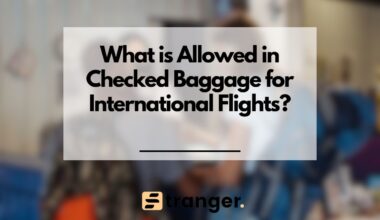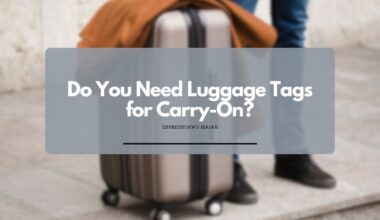As an Amazon Associate, I earn a small commission from qualifying purchases. Learn more about this.
You’re on a plane, excited about your trip.
But upon arrival, things don’t go as planned, and you’re not allowed to enter the country.
Now, you’re stuck at the airport, wondering who will pay for your flight back.
This blog post will explain the policies and help you understand who is responsible in such situations
Who Pays for Flight When Refused Entry?

So, who pays for the flight back when you’re refused entry?
Well, it’s not a straightforward answer.
Generally, it depends on the airline’s policy, the reason for refusal, and sometimes, the laws of the country you’re trying to enter.
- The Airline’s Role: Often, the airline that brought you to the country will be responsible for taking you back. This is because airlines are usually expected to check your travel documents before you board. If they miss something and you’re refused entry, they might have to bear the cost of sending you back.
- Your Responsibility: In some cases, if the refusal is due to a mistake or oversight on your part, like not having the right visa, you might have to pay for the return ticket. Some travelers buy travel insurance that covers these costs. It’s always a good idea to read the fine print of your insurance policy before you travel.
- Country-Specific Rules: In rare situations, the country you’re trying to enter might have special rules. They could either send you back at their expense or require you to pay. This is less common, but it’s something to be aware of.
Understanding the Basics of Travelling
Traveling to a foreign country is an exciting venture, but it comes with its set of rules and requirements.
At the core of international travel are your travel documents.
The most important ones are your passport and, for many countries, a visa.
Your passport is your primary identity document when you’re abroad.
It needs to be valid not just for the duration of your trip, but often for several months beyond your planned return date.
Different countries have different rules about this, so it’s wise to check specific requirements well in advance.
A visa is a permit to enter and stay in a country for a specified period.
Not every country requires a visa for every visitor; this depends on your nationality and the purpose of your visit.
Some countries offer visa-on-arrival, while others require a visa application process before you travel.
Each visa comes with its conditions, like how long you can stay and what you can do while you’re there – tourism, work, study, etc.
Even with these documents in hand, entry into a country isn’t guaranteed.
Immigration officers at your destination have the right to deny entry if they find any issues.
This could be due to various reasons – incorrect or incomplete visa information, suspicion of illegal activities, or even something as simple as missing or incorrect details on your documents.
Sometimes, the rules of the country you’re visiting might have changed recently, and what was a valid document a few months ago might not be sufficient now.
In these situations, the border officials will explain why you’re being denied entry. It’s essential to listen carefully and ask questions if you don’t understand something.
What Happens and Steps to take when you’re refused entry
Let’s walk through what typically happens and the steps you can take to handle the situation effectively.
1. Understanding the Reason for Refusal: When you’re told you can’t enter, the first thing you should do is stay calm and listen carefully to the reason given. It could be anything from visa issues, incomplete paperwork, or sometimes just a misunderstanding. Make sure you get a clear explanation. If there’s a language barrier, ask for an interpreter or seek help from an airport official who speaks English.
2. Communicating with the Airline: After understanding why you were refused entry, your next step should be to contact the airline you flew with. Airlines often have protocols for such situations. They can advise you on whether they will arrange a return flight for you or if you need to book a new ticket. In some cases, if the refusal is due to an oversight on their part, they might cover the cost of your return journey.
3. Exploring Temporary Stay Options: Depending on the country and the reason for refusal, you might need to stay at the airport for a while. Find out if there’s a transit area where you can stay comfortably. If your wait is going to be long, ask airport staff about facilities like lounges, rest areas, or hotels within the airport. Remember, your comfort is important during this unexpected delay.
4. Contacting Your Embassy or Consulate: In situations where the refusal is complex or you feel unfairly treated, get in touch with your country’s embassy or consulate. They can provide assistance, offer legal advice, or even intervene on your behalf if necessary. Embassies are there to help their citizens in foreign countries, so don’t hesitate to reach out to them.
5. Reviewing and Arranging Your Travel Insurance: If you have travel insurance, now is the time to check what it covers. Some policies include assistance in case of refusal of entry, which might cover the costs of a new flight or provide legal aid. Contact your insurance provider and explain the situation to them. Make sure to keep all documents and communications regarding your refusal of entry, as these will be crucial for any insurance claims.







